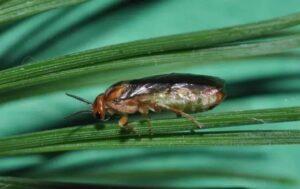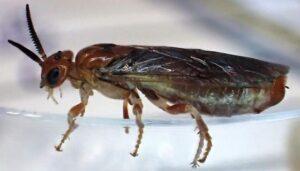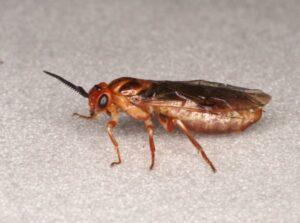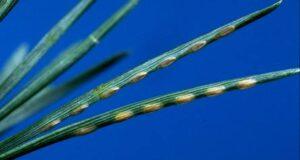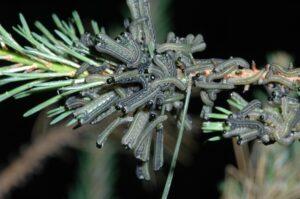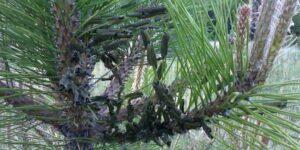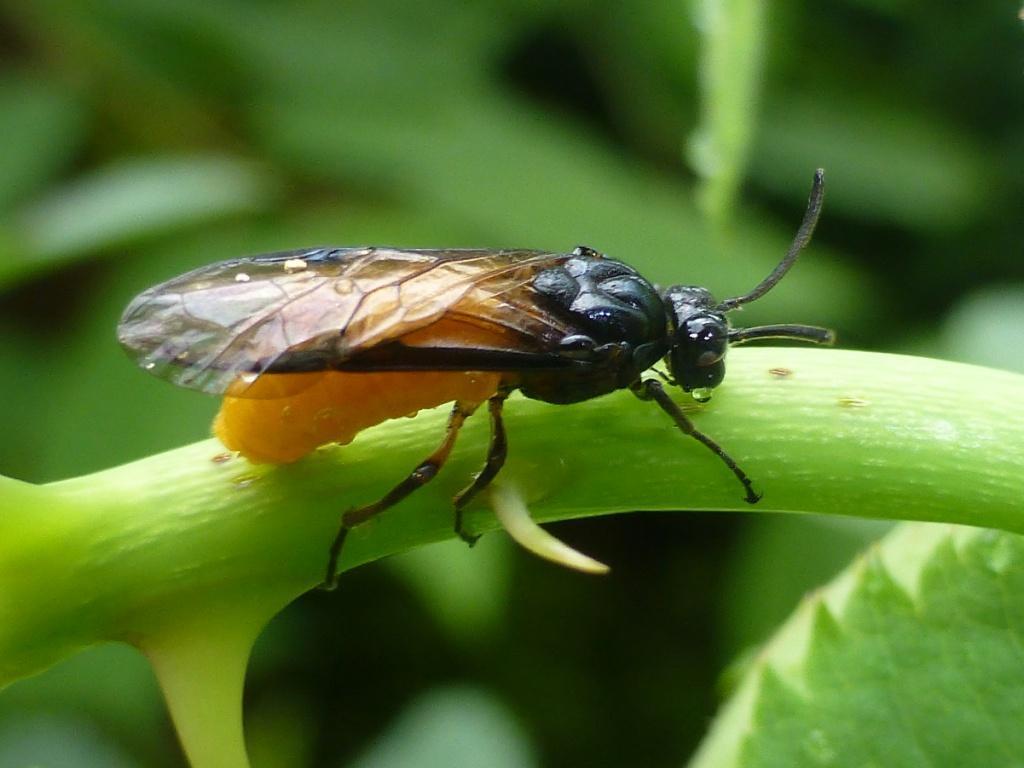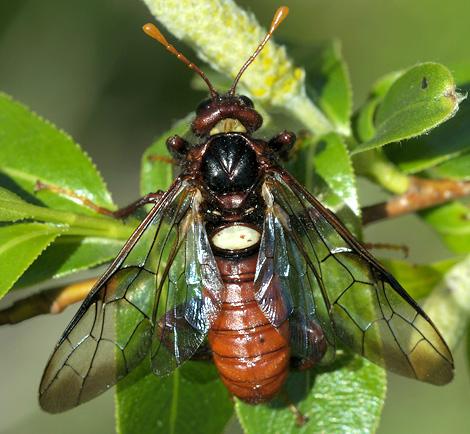European Pine Sawfly (Neodiprion sertifer)
Updated on
30/11/2022As the name indicates, the European sawfly is a species that originated in Europe. However, it was brought over to North America in 1925, where it thrived due to the high population of pine trees.
Scientific Classification
- Class:Insecta
- Order:Hymenoptera
- Family:Diprionidae
- Genus:Neodiprion
- Species:N.sertifer
Conservation Status
Description
An adult European pine sawfly looks like a wasp due to having a broad waist and membranous wings. They are about 0.2-0.33 inches long, though the females are larger than the males. Females are reddish-brown with saw-tooth antennae, while males are black with feathery antennae.
Other Common Names: Pine sawfly, red pine sawfly
Distribution: Native: Europe; Invasive: North America
Habitat: Christmas tree farms,landscapes, and ornamental nurseries
Do they sting: No
Lifespan: 7-9 days
Predator: Ants, beetle larvae, birds, deer mice, fly larvae, frogs, lizards, predatory wasps, shrews, etc
Behavior and Characteristics
Feeding
The larvae feed on the needles of several pine trees, including Jack pine, Japanese pine, red pine, and Scots pine.
Defensive
If threatened, the larvae may raise the front and end portions of their bodies and regurgitate a chemical developed by consuming pine needles.
Life Cycle
European sawflies mate in the fall, with females laying fertilized eggs between September and October.
1. Egg Stage
The females make a slit into the pine needle with the help of their ovipositors. They will then individually lay between 100 and 120 eggs through the slit.
A European pine sawfly egg has a translucent white coloration, oval shape, and smooth and shiny texture. Each egg is about 0.083 inches long and 0.025 inches wide.
2. Larva Stage
After 2-3 weeks, the eggs hatch, and larvae emerge. An individual larva is initially white with a brown head capsule. As they mature, the body becomes yellowish-green, and the head becomes reddish. Black spots also develop in 4-8 rows along their bodies.
A full-grown larva is about an inch long and has three pairs of thoracic legs and 6-7 pairs of prolegs.
3. Pupa Stage
Pupation occurs inside a reddish-brown paper cocoon that looks like a cylinder with rounded ends. They remain in this stage during winter and emerge in the fall of the following year.
Getting Rid of Them
While this species is considered a pest due to the damage done to pine needles and possibly stunting the growth of a tree, it is rarely enough to harm the tree permanently. Oviposited pine needles can be easily distinguished due to the patchiness and subsequently removed. Spraying with pesticides or introducing beetle larvae may also work as a form of control.
Source
denverpost.com, bugguide.net, sawflies.org.uk, plantpath.cornell.edu, extension.umn.edu, mmtreecare.com




